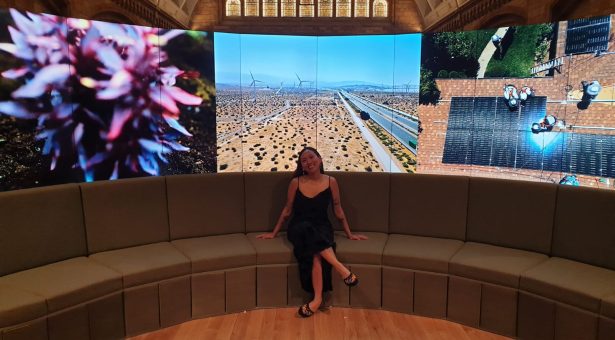Stephanie’s research on invasive species within the UK and EU at the Natural History Museum.

Stephanie Ong, a third-year PhD student based at the Quadram Institute Bioscience in Arjan Narbad’s group researching the potential of bacteriocin producers as modulators of the human gut microbiome completed her placement at the iconic Natural History Museum (NHM) in London, working on sequencing specimens within the museum’s existing collections to help develop a method of species detection using environmental DNA.
There are millions of species in the world with a large majority having no sequencing data attached to them and some have not even been identified as novel species. Ongoing projects such as the Earth Biogenome Project seek to generate reference genomes for all eukaryotic species. The Darwin Tree of Life (DToL) which the Natural History Museum is part of, leads on the collection of fresh samples and correct species identification, needed for the generation of high-quality DNA data.
Stephanie’s placement project was part of the wider INVADERS project to generate genomic data and after initial research into invasive species within the UK and EU, she decided to focus on insect pests and other potential bioindicator species within museums and historical houses with no genome assemblies available.
She wanted to experience what research would be like in a museum which was perfect as her placement involved meeting numerous curators within the entomology department at NHM to discuss the project and identify suitable specimens for destructive sampling. She liaised with a co-investigator from the Biodiversity Genomics Europe project for tissue sampling, fragmented DNA extraction and ancient DNA style library preparation, and learnt how to use and help test-run Lazarus2, a bioinformatics pipeline developed by a visiting UCL master’s student, Theo McLaurin.
Before her placement, Stephanie had little knowledge and experience in eukaryotes as her background is in microbiology. The NHM experience meant she learnt a great deal about insects and alongside the museum’s Integrated Pest Management co-ordinator, Armando Mendez, gained insight into the detection, prevention and eradication of insect pests and specimen conservation techniques. She found this fascinating and admits to now being interested in a potential future career in a museum or botanic garden-based research group. She enjoyed being part of NHM’s community where she found people to be kind, helpful, welcoming, and keen to share their insight and knowledge. One of the curators even gave her a private tour of the museum’s insect collection which was both fascinating and thought-provoking.
The Natural History Museum in London is one of the world’s most renowned museums, dedicated to the natural world. With its stunning Romanesque architecture and iconic entrance hall, it features an extensive collection of specimens related to natural history including fossils, minerals, plants and animals and is a centre for scientific research. Professor Matt Clark, Research Leader in Genomics and Stephanie’s placement supervisor commented, “Stephanie was a great addition to the lab, and it’s great to hear she enjoyed her time here. My group is multidisciplinary, so I enjoy the cross-pollination of ideas which comes from working with researchers from other fields. We’re very lucky to work in the NHM, it is such a great place to work and provides so many opportunities for interesting science.”
Stephanie’s advice for students yet to embark on their PIPS, “Don’t be afraid to try something outside your current scope of knowledge and expertise. You’ll be surprised at what you might find yourself becoming interested in.”
